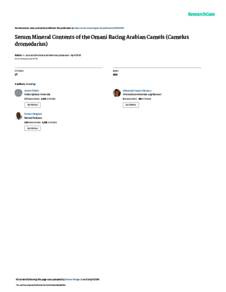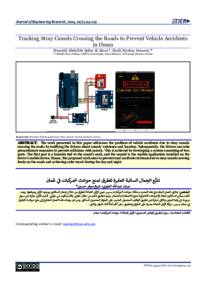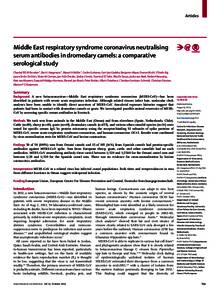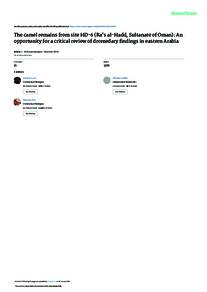Document
Serum mineral contents of the Omani racing Arabian camels (camelus dromedarius).
Identifier
DOI: 10.3923/javaa.2010.764.770
Contributors
Publisher
Medwell Journals.
Gregorian
2010-04
Language
English
Subject
English abstract
Blood samples were collected from thirty, 2 years old female native camels from the Eastern Region of Oman. Camels were managed in the traditional way of racing camels in the Arabian Gulf region, primarily fed fresh alfa alfa and barley grain. Blood samples were collected from jugular vein in EDTA tubes and analysed for haemoglobin and Packed Cell Volume (PCV). Blood samples were collected in serum collection tubes and serum separated by centrifugation. Serum samples were analysed for concentrations of sodium (Na), Magnesium (Mg), Calcium (Ca), potassium (K), Phosphorus (P) and iron (Fe), Copper (Cu) and Zinc (Zn) using Inductively Coupled Plasma Emission Spectrometer (ICP-AES). Means±standard deviation and ranges were computed. Correlation coefficients (R2) were generated between these minerals. Haemoglobin (Hb) and PCV ranges in Omani camels were 11.3-14.8 g dL-1 and 26-34%, respectively. The serum macro elements of Omani camel's ranges were: 97.8-246.1 mEq-1 for Na; 2.0-4.0 mEq IT-1 for Mg; 3.39-8.93 mEq L-1 for Ca; 3.22-8.70 mEq L-1 for K; 5.68-13.0 mg dL-1 for P. The micromineral ranges were: 54.0-214.0 μg dL-1 for Fe; 55.8-110.0 μg dLT1 for Cu; 67.5-177 μg dL-1 for Zn. There were significant correlation coefficient (R2) values between macro elements (Na, Mg, K, Ca and P) with Na being a good predictor of values of these minerals. This study provides a baseline data that would be useful for clinical research with racing camels in Oman. These findings also indicated that Omani racing camel's serum values are within the range of those reported for racing camels in the Arabian Gulf region. The strong correlation between some elements allows analyses for fewer elements to economize analyses cost.
Member of
ISSN
1680-5593
Resource URL
Category
Journal articles




